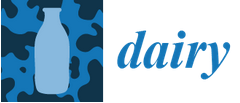Document type: scientific journal published in Dairy
Authors: Maria Papageorgiou, Panagiotis E. Simitzis
Preview: Nowadays, there is growing interest in positive animal welfare not only from the view of scientists but also from that of society. The consumer demands more sustainable livestock production, and animal welfare is an essential part of sustainability, so there is interest in incorporating positive welfare indicators into welfare assessment schemes and legislation. The aim of this review is to cite all the positive welfare indicators that have been proposed for dairy animals in theory or practice. In total, twenty-four indicators were retrieved. The most promising are exploration, access to pasture, comfort and resting, feeding, and behavioral synchronicity. Qualitative behavioral assessment (QBA), social affiliative behaviors, play, maternal care, ear postures, vocalizations, visible eye white, nasal temperature, anticipation, cognitive bias, laterality, and oxytocin have been also studied in dairy ruminants. QBA is the indicator that is most often used for the on-farm welfare assessment. Among all dairy animals, studies have been performed mostly on cattle, followed by sheep and goats, and finally buffaloes. The research on camel welfare is limited. Therefore, there is a need for further research and official assessment protocols for buffaloes and especially camels.
 From the Dairy website
From the Dairy website



